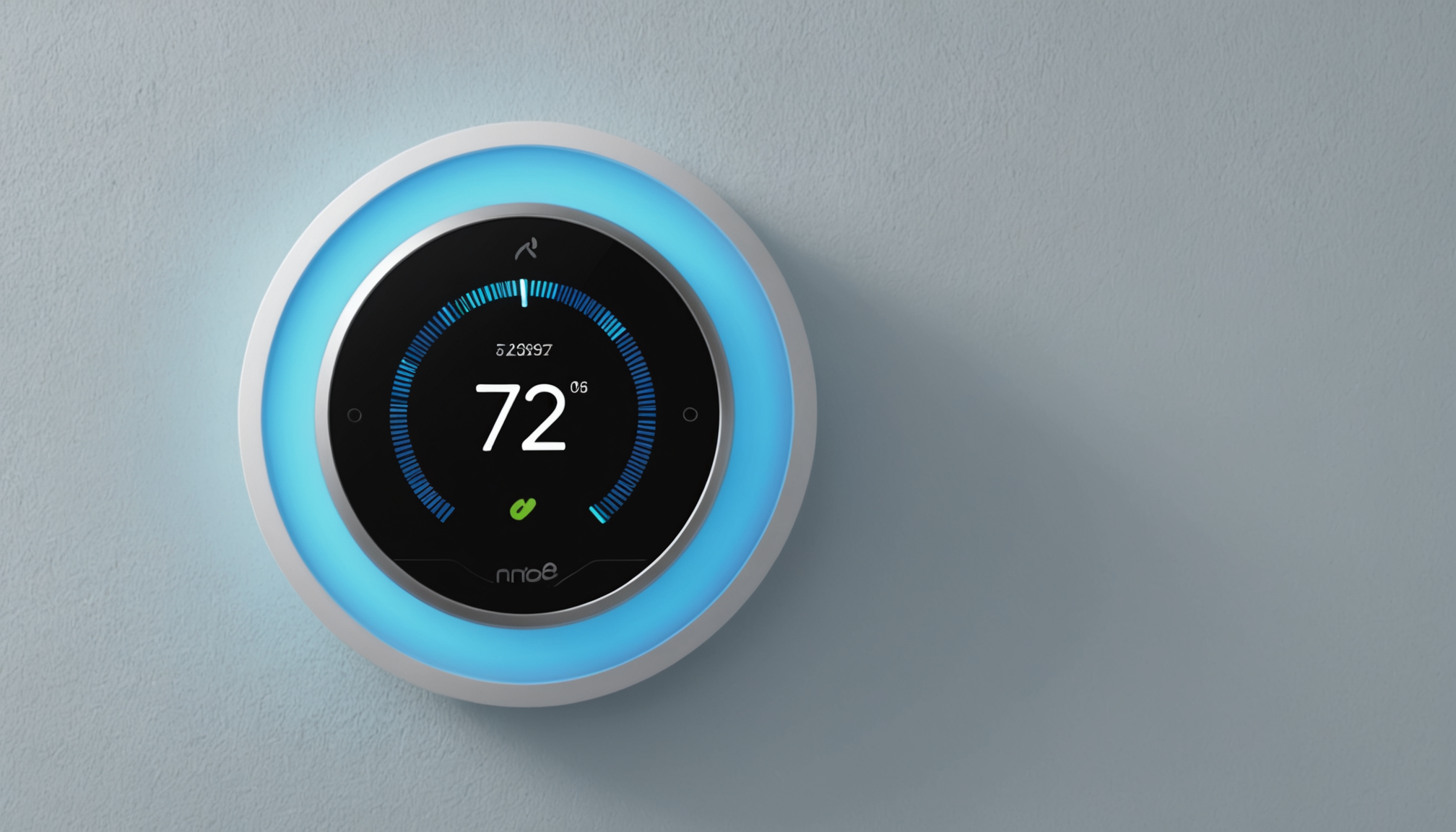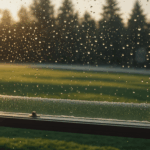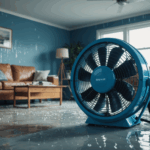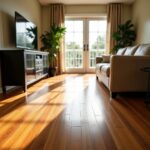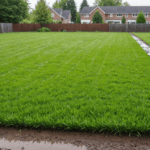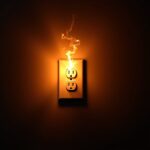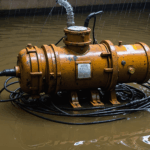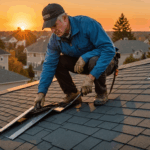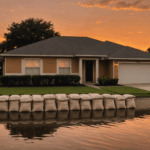Installing a smart thermostat represents one of the most impactful home improvement decisions for both environmental consciousness and cost savings. According to the U.S. Department of Energy, heating and cooling account for nearly 50% of the average home’s energy consumption, making temperature control a crucial aspect of sustainability efforts.
Modern smart thermostats, such as the Nest Learning Thermostat or Ecobee SmartThermostat, utilize advanced algorithms and machine learning to optimize your home’s temperature automatically. These devices learn from your preferences and daily routines, adjusting temperatures to maintain comfort while minimizing energy usage. Studies by Energy Star show that certified smart thermostats can save an average of 8% on heating and cooling costs, or approximately $50-$100 annually.
The technical capabilities of these systems extend far beyond basic programming. Features include:
- Remote control via smartphone apps
- Integration with other smart home devices
- Occupancy sensing to adjust temperatures when no one is home
- Weather-responsive programming
- Energy usage reports and optimization suggestions
Professional HVAC contractors report that homes equipped with smart thermostats can reduce their carbon footprint by up to 1.5 tons per year. Research by the Environmental Protection Agency supports these findings, indicating that if every American home used a smart thermostat, the collective energy savings would be equivalent to taking 1.2 million cars off the road.
The installation process typically takes 30-60 minutes for a professional or experienced DIYer. However, it’s crucial to ensure compatibility with your HVAC system before purchase. Most modern systems work with common wire (C-wire) configurations, but older homes might require additional adapters or professional installation. Major manufacturers offer online compatibility checkers and detailed installation guides to simplify the process.
For optimal performance in green living initiatives, experts recommend integrating smart thermostats with other energy-efficient home features. For instance, coupling these devices with properly sealed windows and adequate insulation can amplify energy savings by an additional 15-20%, according to the Building Performance Institute.
Solar panel installations
Investing in solar panel technology represents a significant stride in home improvement and sustainability efforts. Recent data from the Solar Energy Industries Association indicates that residential solar installations can reduce electricity bills by 50-90%, depending on location and energy consumption patterns. The initial investment, while substantial, has become increasingly affordable with installation costs dropping by more than 60% over the past decade.
Modern photovoltaic systems utilize advanced technology that converts sunlight into electricity with remarkable efficiency. A typical residential setup consists of 20-24 panels, capable of generating 6-8 kilowatts of power, enough to meet the average household’s electrical needs. The systems now come with sophisticated monitoring capabilities that allow homeowners to track energy production and consumption in real-time through smartphone applications.
Financial incentives make the investment even more attractive. The federal solar tax credit currently allows homeowners to deduct 30% of the installation costs from their taxes. Many states offer additional rebates and incentives, while some utility companies provide net metering programs, allowing excess energy to be sold back to the grid. According to the National Renewable Energy Laboratory, homeowners typically achieve complete return on investment within 5-10 years.
The durability and longevity of modern solar systems contribute to their long-term value. Most manufacturers provide 25-year warranties, though panels often continue performing effectively for 30-35 years. Studies show that homes with solar installations increase in value by an average of 4.1%, making them attractive to environmentally conscious buyers.
- High-quality solar panels can withstand severe weather conditions and typically require minimal maintenance beyond occasional cleaning
- Modern systems include microinverters or power optimizers that maximize energy production even when some panels are shaded
- Solar panel installations can qualify homes for various green living certifications, potentially increasing property value further
- Advanced battery storage systems can now provide backup power during outages, enhancing system utility
Energy efficient windows
When it comes to home improvement focused on energy efficiency, several common mistakes can undermine the potential benefits of window upgrades. One frequent error is choosing windows based solely on price rather than energy performance ratings. The National Fenestration Rating Council reports that selecting windows without considering climate-specific ratings can reduce energy savings by up to 30%.
Another critical oversight is improper installation, which can negate even the most energy-efficient window’s benefits. Professional installers note that up to 25% of a window’s efficiency can be lost through incorrect fitting and inadequate sealing. To ensure optimal performance, windows must be properly leveled, insulated, and weatherstripped during installation.
Many homeowners also make the mistake of overlooking window orientation and shading options. South-facing windows in northern climates should maximize solar heat gain, while those in warmer regions benefit from low solar gain coefficients. According to the Department of Energy, properly selected windows based on orientation can reduce energy costs by an additional 15%.
Common installation pitfalls include:
- Failing to address existing water damage or structural issues before installation
- Skipping proper flashing and waterproofing steps
- Using incompatible insulation materials around frames
- Neglecting to check for square openings and proper measurements
- Installing windows without considering local building codes and permits
To maximize the green living benefits of energy-efficient windows, experts recommend working with certified installers who understand local climate requirements. The Window and Door Manufacturers Association suggests obtaining multiple quotes and checking for proper certifications and warranties. Additionally, homeowners should verify that their chosen windows meet Energy Star requirements for their specific climate zone.
For sustainability purposes, it’s essential to dispose of old windows properly. Many materials can be recycled, and some manufacturers offer take-back programs. Improper disposal not only impacts the environment but can also result in fines in certain jurisdictions.
Water conservation fixtures
Modern water-saving fixtures represent a crucial step in sustainability and efficient home improvement, offering substantial reductions in both water consumption and utility costs. Research by the Environmental Protection Agency shows that the average household can save up to 30% on water bills by implementing water-efficient fixtures throughout their home.
Low-flow faucet aerators, which cost as little as $5 per unit, can reduce water usage by 30-50% without compromising water pressure. Similarly, high-efficiency showerheads can save the average family nearly 2,700 gallons of water annually, equating to significant cost savings while supporting green living practices.
Dual-flush toilets have become increasingly sophisticated, offering both practical functionality and water conservation benefits. These systems typically use 1.28 gallons per flush or less, compared to older models that use 3.5 to 7 gallons. The EPA estimates that replacing old toilets with WaterSense-labeled models can save a family of four over $90 annually and nearly 13,000 gallons of water.
Advanced water conservation technology includes:
- Smart leak detection systems that alert homeowners to potential problems
- Touchless faucets with precision sensors to prevent waste
- Smart irrigation controllers that adjust based on weather conditions
- Greywater systems that recycle water from sinks and showers
The return on investment for water-efficient fixtures is particularly impressive, with most installations paying for themselves within 1-3 years. According to plumbing industry experts, homes equipped with comprehensive water conservation fixtures can reduce water consumption by up to 50%, making these upgrades particularly valuable in regions prone to drought or water restrictions.
Professional plumbers recommend implementing these changes gradually, starting with the most frequently used fixtures. This approach allows homeowners to track savings and adjust their water consumption habits accordingly. For maximum effectiveness, combine fixture upgrades with regular maintenance and prompt repair of any leaks – even a small drip can waste up to 3,000 gallons annually.
By adopting water-efficient fixtures, you’re not just reducing utility bills; you’re contributing to a more sustainable future while increasing your property’s value. Studies show that homes with water-efficient features are increasingly attractive to environmentally conscious buyers, potentially commanding premium prices in today’s market.
Sustainable insulation solutions
- How much can I expect to save on energy bills with proper home insulation?
- According to the Department of Energy, proper insulation can reduce heating and cooling costs by an average of 15-20%. In most climates, the investment in sustainable insulation typically pays for itself within 3-5 years through reduced energy bills.
- What are the most eco-friendly insulation materials available for home improvement?
- The most sustainable insulation options include recycled denim, sheep’s wool, and cellulose made from recycled paper products. These materials offer excellent thermal performance while having a minimal environmental impact and containing no harmful chemicals.
- How often should insulation be replaced or upgraded?
- Quality insulation can last 20-30 years if properly installed and maintained. However, signs like increased energy bills, uneven temperatures, or visible damage should prompt an inspection, and upgrades may be needed sooner in older homes to meet current energy efficiency standards.
- Is it worth investing in spray foam insulation for green living?
- While spray foam insulation has a higher initial cost, it provides superior air sealing and R-value compared to traditional options. Studies show it can reduce energy costs by up to 50% and significantly improve a home’s overall sustainability performance.
- Can I install insulation myself to save money?
- While some types of insulation can be installed DIY, professional installation is recommended for optimal performance and safety. Proper installation is crucial for achieving maximum energy efficiency and avoiding potential issues like moisture problems or reduced effectiveness.
